6 of the Most Common Spiders in Perth

Bites and Stings
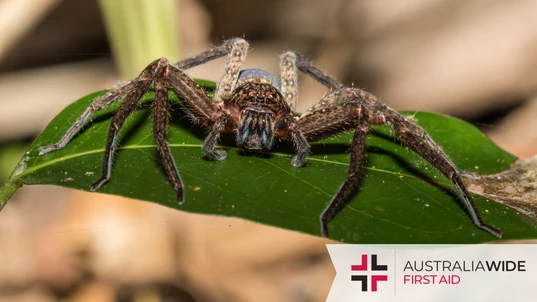
Perth is home to a variety of spider species ranging from the virtually harmless to the outright deadly. After reading this article, you will know what these spiders look like, where they hide, and how to treat their bites.
Not only is Perth the sunniest capital city in Australia, it is also home to species of spiders ranging from the virtually harmless to the outright deadly. Knowing what these venomous spiders look like, where they hide, and how to treat their bites can drastically reduce your risk of a trip to the emergency room. This article will help you live harmoniously alongside 6 of Perth's most common spider species. We also cover spider bites in our general and childcare first aid courses. We have training locations in Perth and in every other state, capital city, and major town throughout Australia.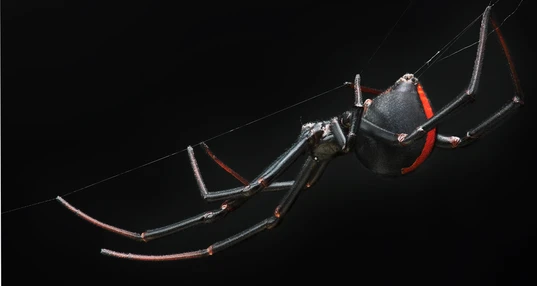
A female Redback spider
Redback spider (Latrodectus hasselti)
Appearance
Female redback spiders have the following characteristics:- A black, pea-shaped body that can grow up to 1 cm in size
- Slender legs
- An orange to red longitudinal stripe on the top of their abdomen
- An orange to red hourglass-shaped spot on the underside of their abdomen
- A light brown body that can grow up to 4 mm in size
- White markings on the top of their abdomen
- A pale hourglass-shaped spot on the underside of their abdomen
Habitat
Redback spiders, also known as the Australian Black widow, are widely distributed across the country. They prefer to build their webs in dry, sheltered sites close to human habitation, including:- Sheds
- Toilets
- Junk-piles
- Rocks and logs
Danger
Only female Redback spiders are considered dangerous to humans, as the fangs of their male counterparts are too small to pierce human flesh. Redback spider venom acts directly on the nervous system and can cause the following symptoms:- Pain
- Sweating
- Muscular weakness
- Nausea and vomiting
Looking to get you First Aid knowledge up to date?
We run certified First Aid courses throughout all major Acustralian citys. Find a location near you.
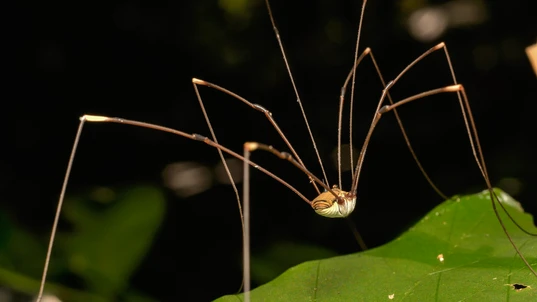
The Daddy-long-legs spider
Daddy-long-legs spider (Pholcus phalangioides)
Appearance
Daddy-long-legs have the following characteristics:- A pale brown body that can grow up to 9 mm in size
- Extremely long, skinny legs
Habitat
Having been accidentally introduced from Europe, this cosmopolitan species can now be found in most urban areas throughout Australia. They like to build their thin, tangled webs in sheltered, undisturbed areas of the house, including:- Under furniture
- Behind doors
- In the corners of ceilings
Danger
The Daddy-long-legs spider is considered largely harmless to humans, as its venom typically results in a short-lived stinging sensation. If you are bitten by this species, clean the affected area with soap and water, apply a cold compress, and seek medical attention if you are worried about your symptoms.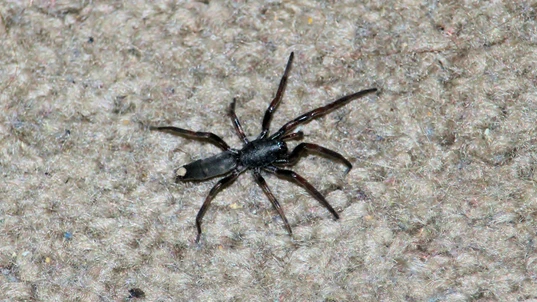
The White tailed spider
White tailed spider
Appearance
The White tailed spider has the following characteristics:- A dark reddish to grey body that is shaped liked a cigar and can grow up to 18 mm in females and 12 mm in males
- Dark orange-brown banded legs
- A white spot at the tip of their abdomen
Habitat
One of the most common species of White tailed spider, Lampona cylindrata, is widely distributed across southern parts of the mainland, including Western Australia. In the wild, they tend to shelter beneath rocks, logs, and other detritus. In the summer months, however, they tend to venture indoors and hide between pieces of fabric and in sheltered nooks and crannies.Danger
Like most spiders, this species will generally only bite people when provoked. Likewise, their venom typically causes mild symptoms similar to those of a bee sting, including:- An initial burning pain
- Swelling
- Itchiness
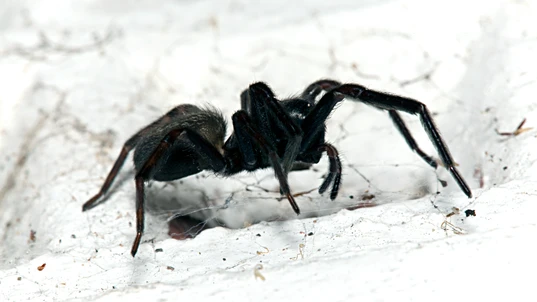
The Black house spider
Black house spider (Badumna insignis)
Appearance
The Black house spider has the following characteristics:- A dark, robust body that can grow up to 18 mm in females and 15 mm in males
- A dark brown to black carapace covered with grey hairs
- A charcoal grey abdomen, sometimes with a dorsal pattern of white markings
Habitat
Though widely distributed across Australia, this species is particularly prevalent in southern and eastern parts of the mainland. They typically build their web retreats in:- Tree trunks
- Rock walls
- Logs
- Buildings - specifically, window frames and wall crevices
Danger
Black house spiders are a shy species and rarely bite people. However, their venom can cause considerable pain and swelling. On rare occasions, it can also cause:- Nausea
- Vomiting
- Sweating
- Giddiness
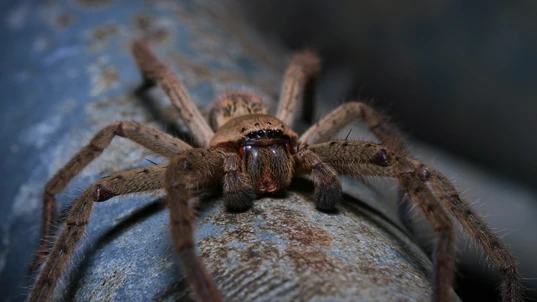
The Huntsman spider
Other common spiders in Perth
Huntsman spider
Huntsman spiders are renowned for their long legs, which bend forward like those of a crab. They are widely distributed throughout Australia and like to live under rocks, loose tree bark, and in crevices on rock walls. Their bites are infrequent and generally cause negligible symptoms that can be treated with a cold compress, such as mild pain and swelling.Wolf spider
Wolf spiders typically have drab coloured bodies covered in grey, brown, or black markings. They are widely distributed throughout Australia, with some species common in suburban gardens. Female Wolf spiders have also been known to enter homes to protect their egg sacs from the cold. Their bites typically result in only minor symptoms like local pain or itchiness.
Originally published at
https://www.australiawidefirstaid.com.au/resources/spiders-in-perth
as part of the Australia Wide First Aid Articles Library










